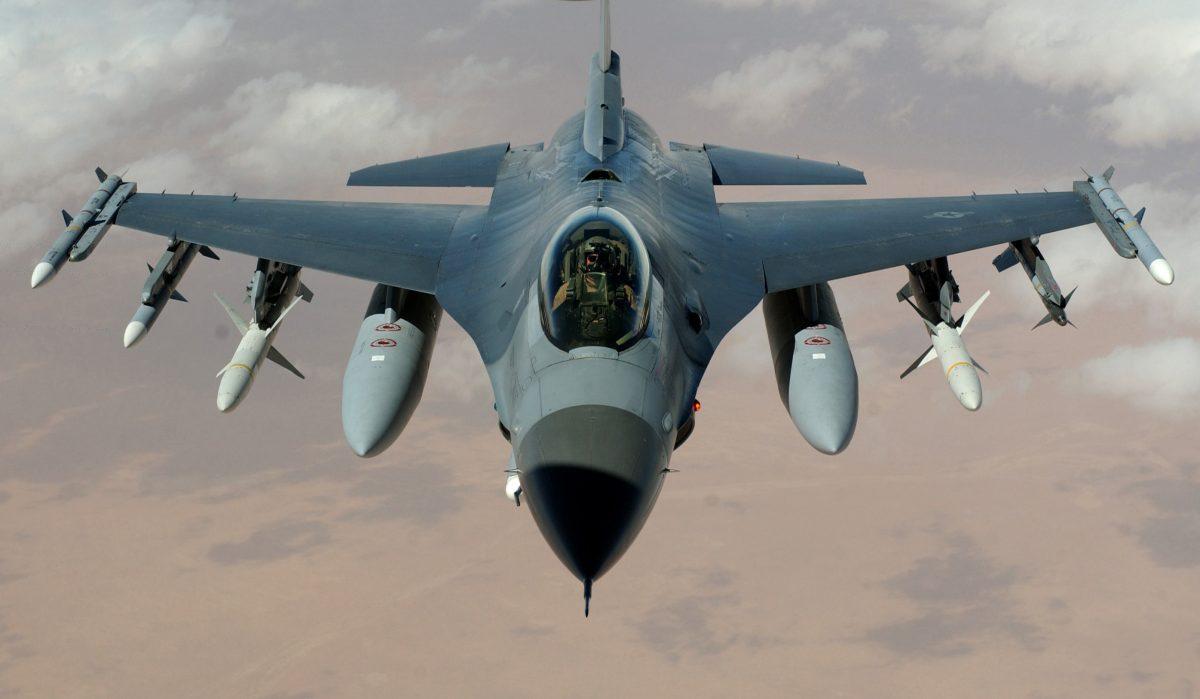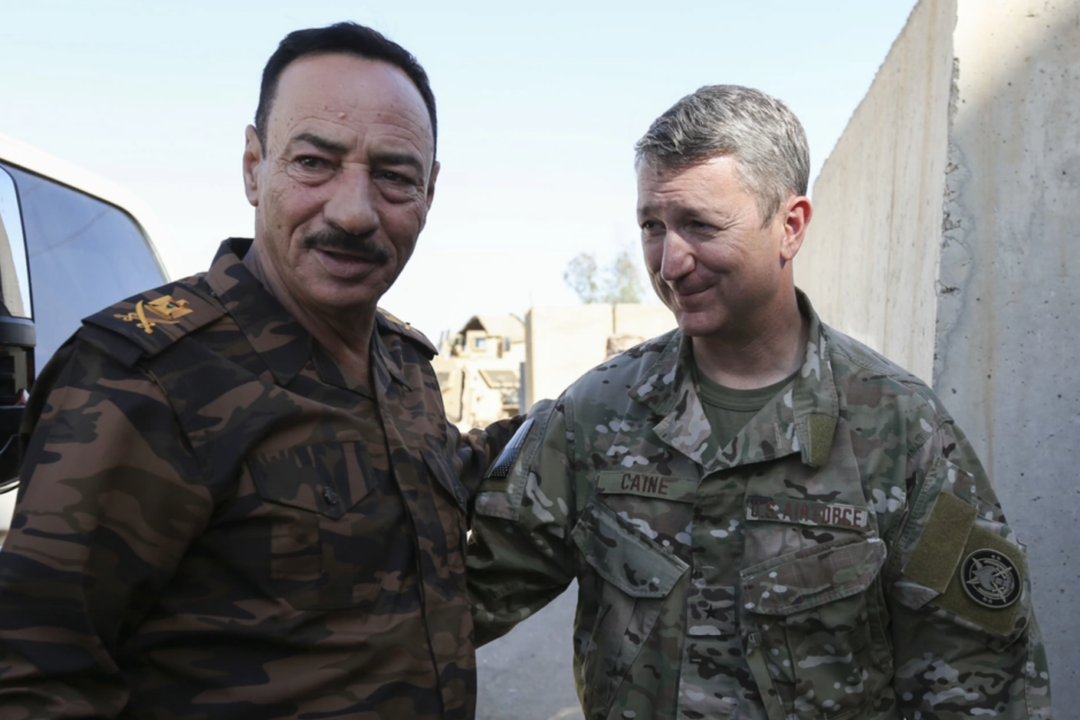Trump nominated retired U.S. Air Force Lt. Gen. John D. Caine to lead the Joint Chiefs of Staff after firing Gen. Charles Q. Brown.
President Donald Trump has named retired U.S. Air Force Lt. Gen. John D. Caine to serve as the next chairman of the Joint Chiefs of Staff, the highest-ranking uniformed leader in the U.S. military.
With 34 years of military service, Caine has flown in aerial combat missions, overseen inter-branch special operations, taken on White House advisory assignments, and worked with the Central Intelligence Agency. Caine’s military career included time spent in the Air Force’s active component, as well as time in the Air National Guard. He has also worked with private business entities focused on aerospace and national security matters, including recently at Voyager Technologies.
The nomination requires bringing Caine back out of retirement from military service after he concluded his service in December 2024.
Announcing the nomination in a post on his Truth Social account on Feb. 21, Trump credited Caine—whom he referred to as “Razin” Caine—with playing a key role “in the complete annihilation of the ISIS caliphate.”
“Many so-called military ‘geniuses’ said it would take years to defeat ISIS. General Caine, on the other hand, said it could be done quickly, and he delivered,” the president wrote.
Trump opened up the chairman position on the Joint Chiefs of Staff for Caine by removing Gen. Charles Q. Brown from the leadership post on Feb. 21. Caine will first have to go before the U.S. Senate before he can take over from Brown.
Federal law states that the chairman of the Joint Chiefs of Staff is generally chosen to serve a four-year term. In the event of a vacancy midway through one chairman’s term, the president may choose an officer to fill the vacancy for the remainder of that four-year term. Brown began his chairmanship in October 2023.
Federal law also states that in choosing the next chairman of the Joint Chiefs of Staff, the president may pick from officers who have already served as the vice chairman of the Joint Chiefs of Staff, or as the chief of staff of any of the military branches, or as the commander of a unified or specified combatant command. Caine has not held any of these specific qualifying positions.
The president may waive these selection criteria on the premise that the decision is in the national interest. Still, Trump’s move to select Caine as the next Joint Chiefs chairman could invite added scrutiny during the Senate confirmation process.
“Despite being highly qualified and respected to serve on the Joint Chiefs of Staff during the previous administration, General Caine was passed over for promotion by Sleepy Joe Biden,” Trump said in his Feb. 21 Truth Social post.
Democrats have already raised concerns that Trump’s decision to remove Brown from the Joint Chiefs chairmanship was politically motivated.
“I am troubled by the nature of these dismissals. This appears to be part of a broader, premeditated campaign by President Trump and [Defense Secretary Pete Hegseth] to purge talented officers for politically charged reasons, which would undermine the professionalism of our military and send a chilling message through the ranks,” Sen. Jack Reed (D-R.I.), the ranking member on the Senate Armed Services Committee, said in a Feb. 21 statement.
Sen. Jeanne Shaheen (D-N.H.), who also sits on the Senate Armed Services Committee, said in a Saturday statement the decision to fire Brown is “disrespectful, dangerous and needlessly political.”
“It will do nothing to improve readiness, increase our lethality or make our military stronger,” she added.
Fighter Pilot
Caine was commissioned as an officer in the Air Force after graduating from the Virginia Military Institute in 1990 with a degree in economics. He began his military career as a pilot, learning to fly the F-16 Fighting Falcon fighter jet, and obtained a master’s degree in air warfare from American Military University in 2005.

According to a U.S. Air Force biography, Caine logged some 2,800 flight hours, with more than 100 of those in a combat setting.
Caine was assigned to the 121st Fighter Squadron at Andrews Air Force Base in Maryland on Sept. 11, 2001, as al-Qaeda hijackers took over and crashed commercial airliners into the World Trade Center in New York City and into the Pentagon. In an interview he shared with the CIA in 2023, Caine recounted how he and his fellow fighter pilots were ordered to take to the skies over Washington that day, with authorization to shoot down any additional aircraft that may have been hijacked.
“I remember telling the wingman that I was going to fly with that day, ‘Don’t shoot anybody. I’ll make the decision,’ because I was very mindful that if we made a mistake or if we got it wrong or if we missed somebody and we did not shoot, the consequences of that could be catastrophic, not only for the people on the ground, but for the country as a whole,” Caine said.
Caine’s biography for Voyager Technologies states that he also served as a mission commander on the first night of the 2003 U.S. invasion of Iraq.
Special Operations Commander
Throughout his military career, Caine had assignments working with the special operations community.
From January to July 2008, Caine served on the Joint Special Operations Task Force – Air Directorate, at Balad Air Base in Iraq. After that, he served for more than a year and a half as a liaison officer for the 24th Special Tactics Squadron, which provides special operations airmen for some of the U.S. government’s most sensitive military operations.
Caine went on to serve on the command staff of the elite U.S. Special Operations Command (SOCOM) and the staff of SOCOM’s most elite and secretive component, the Joint Special Operations Command (JSOC).
Caine’s time with SOCOM and JSOC overlapped with Trump’s first term in office. The general was overseeing special operations efforts in Iraq as part of the broader mission to defeat ISIS between May 2018 and September 2019.
In public remarks, Trump has periodically recalled meeting Caine for the first time in Iraq in 2018, and has praised the general for his optimistic timeline for reversing ISIS’s territorial holdings throughout the region. Speaking at an event Miami on Feb. 19, Trump described meeting Caine for the first time and referred to him as “a real general, not a television general.”
“And [Caine] did. He did that,” Trump said.

Intelligence and White House Assignments
For two years, from September 2019 to September 2021, Caine served as the director of the Department of Defense’s Special Access Programs—a portfolio of highly classified government programs.
In the last three years of his military service, Caine served as the associate director for military affairs for the CIA. The CIA’s military affairs component is established to coordinate the collaborative efforts between the U.S. military and the intelligence service.
Earlier in his military career, Caine also spent more than two years in the White House.
He first worked as a White House fellow and special assistant to the secretary of agriculture in August 2005 and continued on that assignment until October 2006. From there, he served as a policy director on counterterrorism and strategy in the White House Homeland Security Council until January 2008.
Civilian Life
Caine’s Air Force biography notes he served in the military part-time from 2009 to 2016 as a member of the National Guard. His military service biography describes Caine as “a serial entrepreneur and investor” in his civilian life.
In the short window between his planned retirement and Trump’s nomination announcement, Caine had taken on positions at four different private business enterprises involved in venture capital and national security. He was named chairman of the national security advisory board at Voyager Technologies, a company that deals with defense and aerospace technologies.
“Congratulations to Lieutenant General Dan Caine on your nomination as the chairman of the Joint Chiefs of Staff. Team Voyager thanks you for your leadership on our National Security Advisory Board. Duty calls, and we’re proud to have you leading our nation’s armed forces,” Voyager Technologies said in a Friday LinkedIn post following Trump’s announcement.

